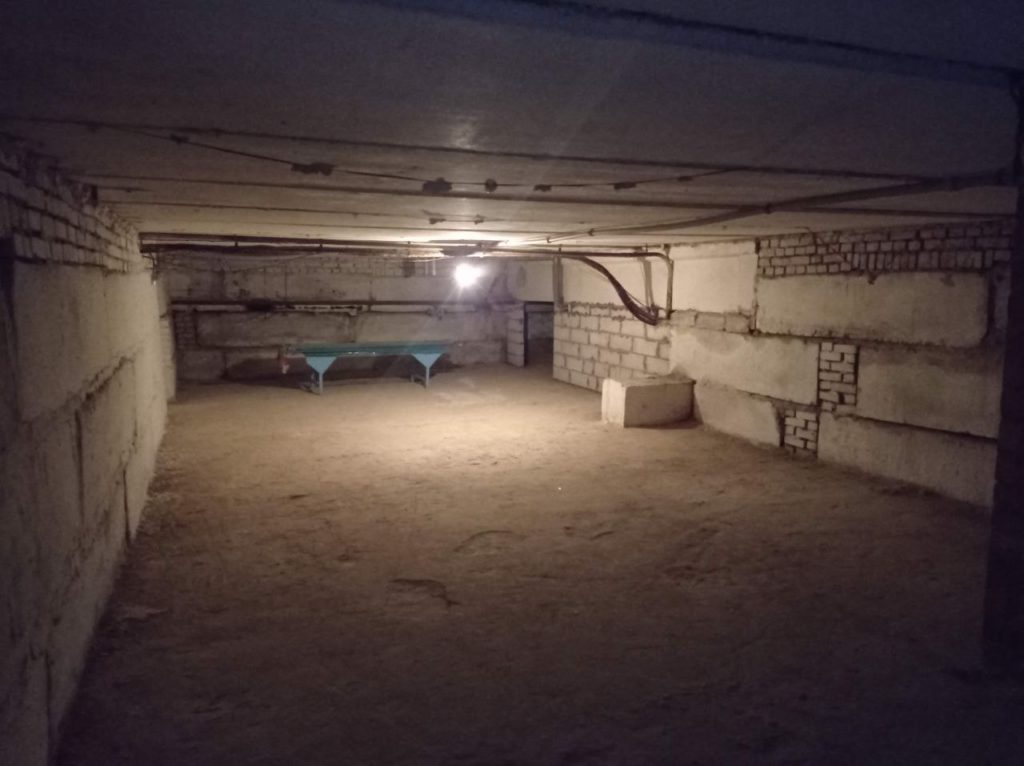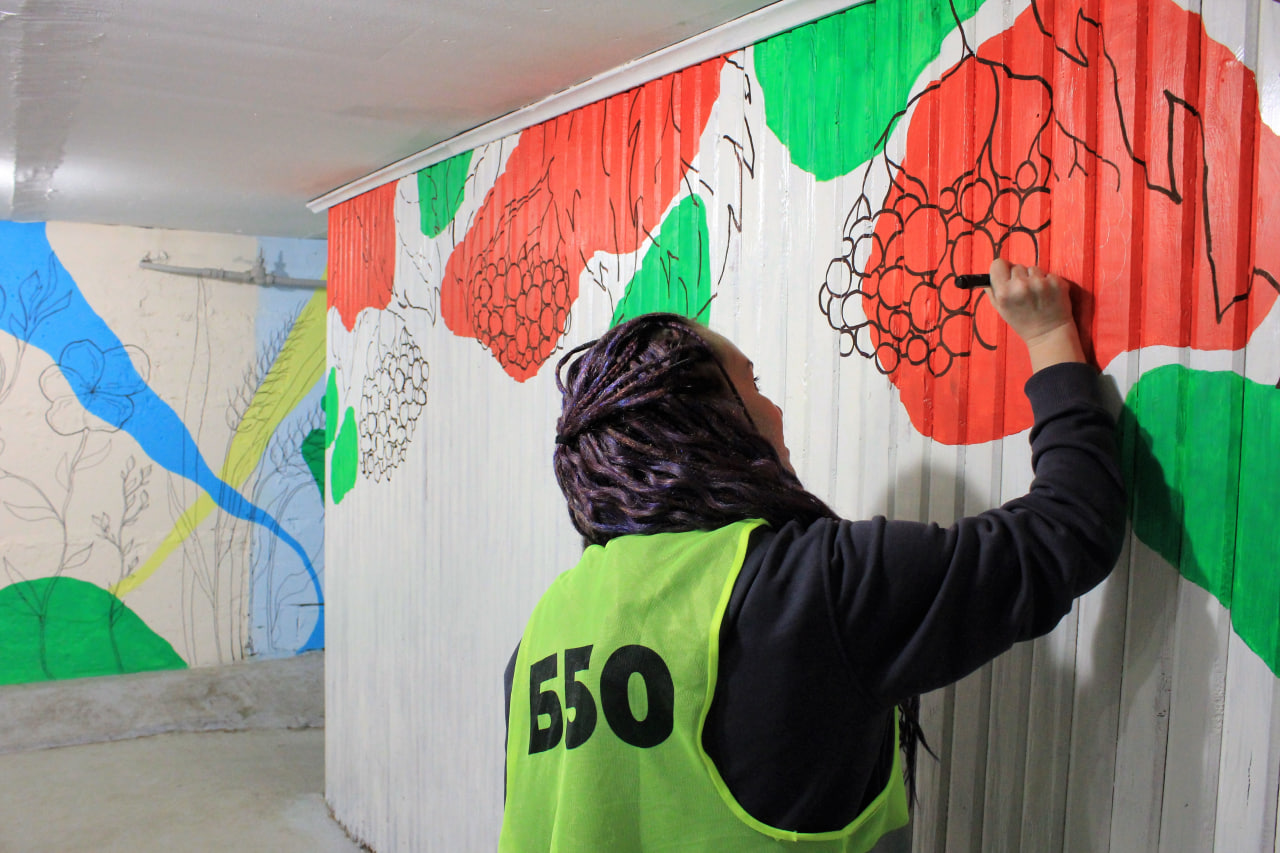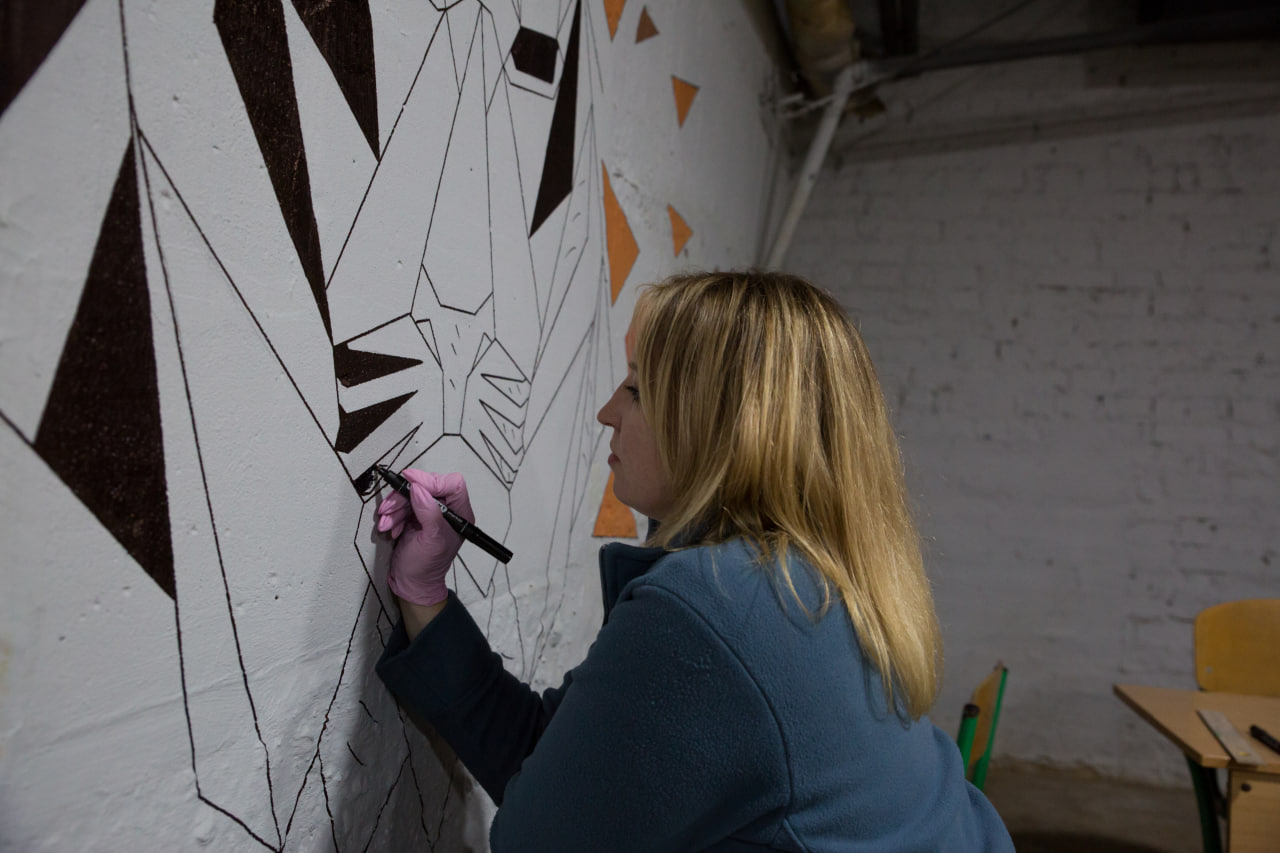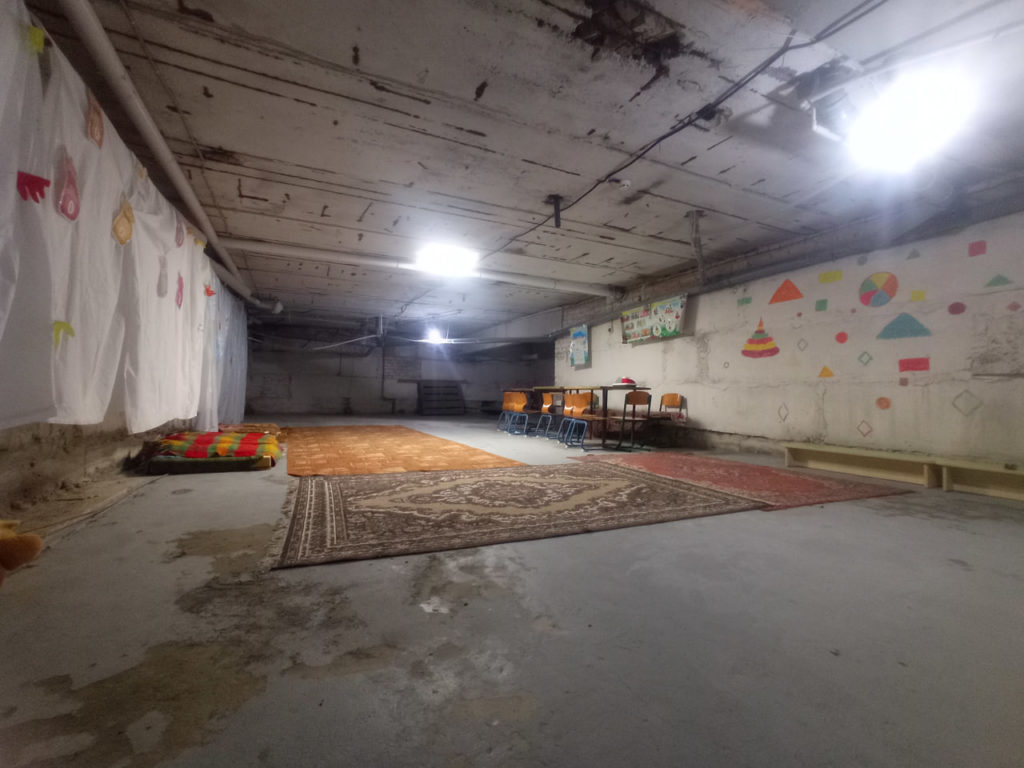B50 projects to improve children’s bomb shelters: analysis, results, plans
Russia’s full-scale invasion of Ukraine has turned the lives, habits, everyday life and routine of Ukrainians upside down. In 2014, at the beginning of the next russian aggression, we got used to the “Shelter” signs on the walls of our houses. However, fortunately, for most Ukrainians, it was just a new and unusual element of the urban landscape. Everything changed in 2022. The enemy is shelling the entire country almost daily, targeting “military targets only” residential buildings, hospitals, and schools. This has become our new normal.
Our involvement
The B50, as an organization that emerged as a response of a part of active civil society to the challenges of a strange new time, has been responding to the needs facing Ukraine since the beginning of its activities in the spring of 2022. In the fall of 2022, when B50 had just begun the process of transforming from a volunteer group into a structured organization, we took on a challenge that was difficult for us at the time – to completely reconstruct and decorate the shelter of a kindergarten in Bucha, a city that has become one of the symbols of russian aggression and Ukrainian resistance.



Our contribution
After the successful implementation of the project, we understood, analyzed, and assessed the need for its scaling. We collected applications for further work (94 in total). In a year and a half, we helped to repair, equip, and decorate eight facilities in different parts of the Kyiv region. At two of these facilities, we worked only with decoration, as their full repair had already been done.



State of the sector
Having completed work at another location, namely the large-scale case of Zavorychi Gymnasium, we decided to summarize and analyze the interim situation in the sector of our work. You will find the results below. We do not claim to be fully representative of this analysis, but the situation in this niche allows us to extrapolate the situation to a wider scale and draw certain conclusions with certain reservations.
Application period: winter-summer 2023.
Application collection method: public search on social media, through personal contacts, including personal contacts of previous beneficiaries.
| Applications received | 94 |
| Rejected by distance parameter | 35 |
| Implemented by B50 resources | 6(8)* |
*Reconstruction project (Shelters project)
| Our residual selection as of May 2024 1 | 51 |
| Unable to reach | 7 |
| Applications are out of date (made in full or in the process of repair)2 | 16 |
| Applications are fully relevant, there is an urgent need for repairs | 11 |
| Applications are partially up-to-date, partial repair is required | 9 |
| The applications are partially up-to-date, decorating is required | 8 |
1 Kyiv region, distance up to 60 kilometers, approximately
2 The contribution to the repair of shelters is roughly equally divided between the own resources of institutions, communities, local authorities and international donors (UNICEF and other organizations)

How processes are organized in B50 projects
With a large volume of applications and potential beneficiaries, we assess the current state of the facilities, the importance of the institution’s contribution to the community, and the number of children who will eventually benefit from B50.
Based on the experience of our previous cases, we also came to the conclusion that it is necessary to involve community members more actively in the work as volunteer assistants.
Another interesting innovation that we plan to repeat is the organization of a final celebration for the kids, so that the place that was previously associated with gloomy dark walls and the traumatic experience of air raids is transformed in their minds into a bright, comfortable space, a place of celebration, safety, and comfort.
The evaluation takes place at the following levels
- Evaluation of the application form and the information provided in it.
- Evaluation of the object’s condition based on photos and videos from the applicant.
- Additional communication, clarification of details.
- Compilation of a long list and short list.
- On-site inspection, detailed assessment, formation of a concept of work and results for each facility, assessment of the prospects of the facility for the likelihood of its development or, conversely, closure (we receive such information from the relevant local authorities).
- Forming clusters based on geography to optimize logistics so that B50 teams can work simultaneously at several facilities nearby.
- Choosing between the formed clusters, taking into account the level of need and assessing the most effective potential impact of the B50 assistance.
- Creating estimates, concluding contracts and signing other necessary documents.
- Design of shelter decoration layouts, coordination with the administrations of the facilities, adjustment of estimates.
- Publicizing the start of work.
- Search for partnerships, optimal price offers for construction materials, their purchase and logistics, start of work.
- Fundraising, construction and finishing works, progress reporting and communication with the administration – on an ongoing basis.
- when developing the work plan and design of the decoration, we rely on our own experience and use the recommendations from the manual “Iron Shelter: A Guide to Shelter Construction”, which is the result of joint work of relevant ministries and agencies.
Results, plans and vision
This analysis does not claim to be an objective assessment of the state of affairs in the field of shelter construction and arrangement in educational institutions. It is primarily aimed at an internal assessment of the prospects and needs in our field of activity, as well as at publicizing the need for further work of the B50 projects.
The analysis confirmed our previous estimates that the situation with the construction of such facilities is not catastrophic in the area where B50 volunteer teams operate, namely within a radius of about 60 kilometers from Kyiv, and that there are many different players in the sector. At the same time, the need remains urgent and will remain so for at least a year.
It should be noted that the situation with the construction of children’s shelters is expected to be better in the towns and cities of the districts and worse in remote villages and community centers. This encourages us to focus our efforts on those facilities that are currently largely out of focus.



At the same time, we can assume that the situation is worse outside this radius and in remote regions, so we and other players in the sector should look for and find opportunities to work not only in certain regions but throughout Ukraine.
It is important to emphasize the arrangement of bomb shelters not only as places to stay during air raids, but also as additional specialized or multifunctional spaces, which will make these efforts much more important in the long run. After all, as we all hope, shelters for missile strikes will soon cease to be necessary and practically relevant. That is why B50 will create not only shelters but also auxiliary spaces for children’s development and education at both previous and future sites, working closely with the administrations of the institutions and taking into account their visions and plans.


